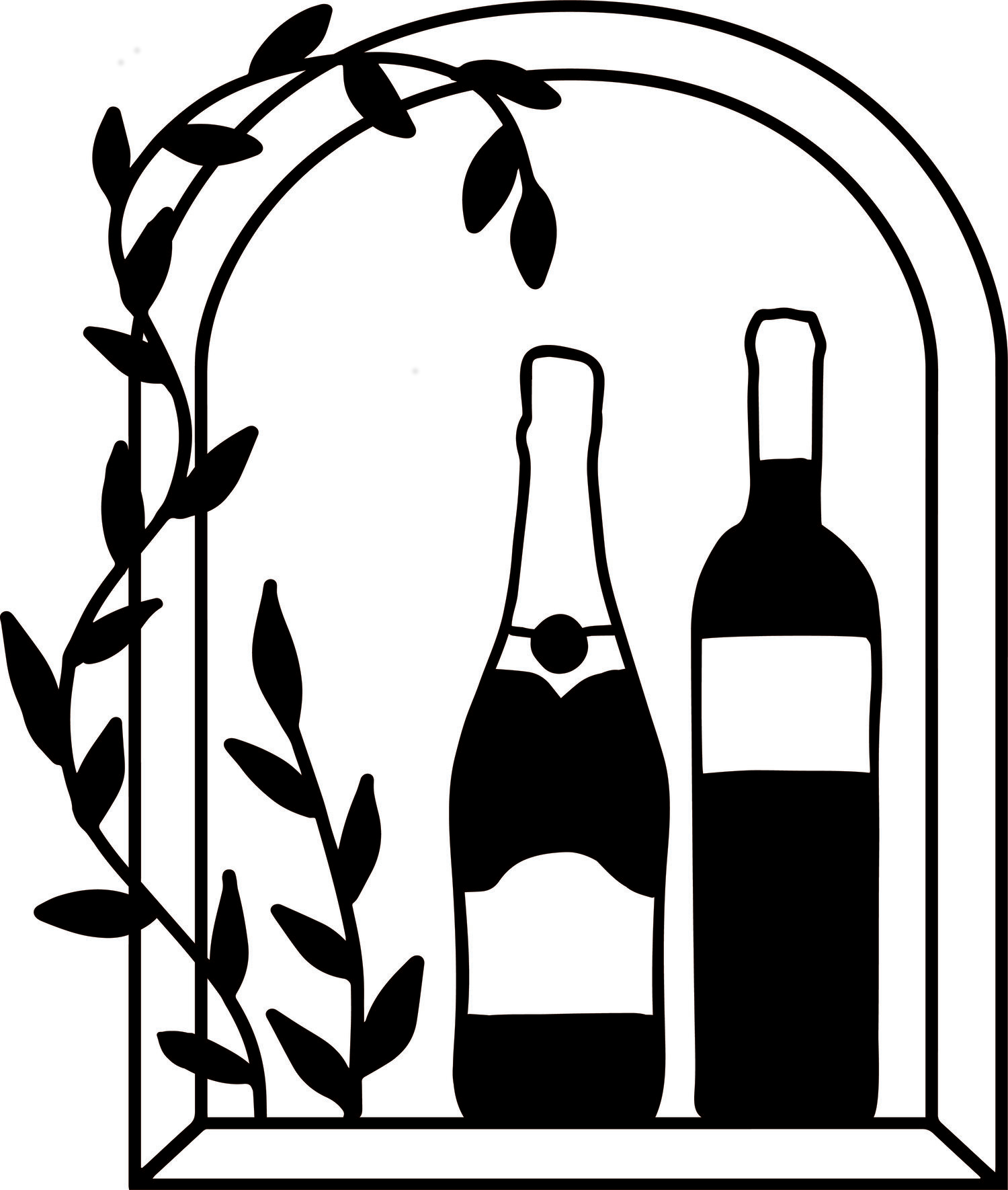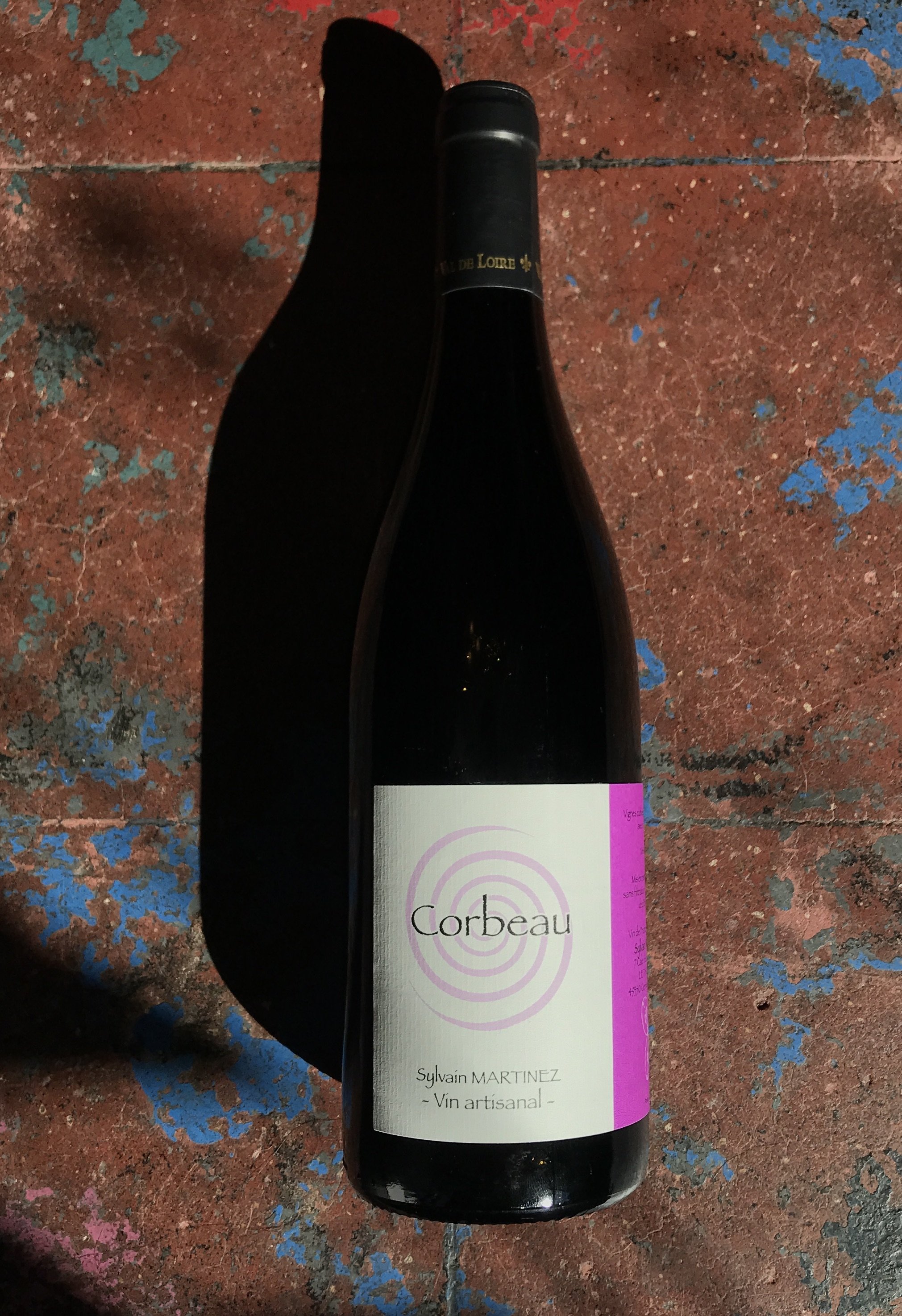Sylvain Martinez 'Corbeau'
Sylvain Martinez is located in Thoureil (on the NE bank of the Loire river between Saumur and Angers) and he is rad AF!! 10+ years working with Olivier Cousin, Sylvain learned the glorious art of non/low intervention and how working super hard in the vineyards and paying an actual liiving wage (combined with actual livable conditions when needed!!) can equate to making incredible wines, Finding an abandoned vineyard on the bank of the Loire allowed him to begin his own project near L’Abbaye de Saint-Maur. The wines are raised in the Caves de l'Abbaye, a semi-troglodyte cellar that he shares with a few other natural winemakers. These days he’s working 2 hectares of vines made up of Chenin Blanc, Grolleau, Pineau d'aunis, and Gamay - some vines are 100+ years old and he is in the process of planting new vines of the traditional varietals (Pineau d’Aunis, Grolleau, Chenin Blanc, etc.)
‘Corbeau’ is made up of 80% Grolleau and 20% Gamay. Grolleau is one my favorite grapes, deep and dark in appearance with relatively thin skin leading to a lighter red. Sensitive and difficult, it takes the right touch and sensibility to tend to these grapes. Traditionally, it was a very popular grape but was pushed aside for Gamay and Chenin Blanc so little remains. Thanks to Sylvain and some friends, it is being preserved and wine is being made with this yummy!! The AOC (French government body that decides what is allowed in French wine, cheese, etc.) has decreed that the use of Grolleau in blends is not allowed - hence the Vin de France on the back. Honestly, a lot of producers use Vin de France as a way to push back on the AOC for outlawing grapes that are traditional to a region in favor of the more known grapes and it will continue to be interesting to see how things progress. To me, Grolleau is a massively undervalued grape, and if I see some on a shelf, I’m going for it every time!
Coming from 80+ vines that are own-rooted (meaning they’ve never been grafted on to American rootstock), these vines have their roots on clay and sand soils bringing all kinds of glorious tension and minerality to the fruit. Hand harvested bunches are placed in a neutral vessel where they begin whole bunch fermentation. Carbonic maceration takes place over about 10 days with most of the grapes then a gentle press to release any remaining juice from the grapes. The juice is then moved to neutral barrels where it ages for a year and a half.
tbh,I think this bottle has everything to be loved from a Loire red! Gorgeous minerality, precision and quality but so drinkable and approachable. An underrated grape that gets to shine. Dusty and earthy, light with black cherry flavors and an herbal earthy quality that keeps it down to earth. Bright acidity and a long finish keeps it fresh, interesting yet utterly chuggable. Chill this yummy down for a perfect beach red! Or let it stay at room temp (not too warm though) for a fabulous accompaniment to a grilled burger or steak.

